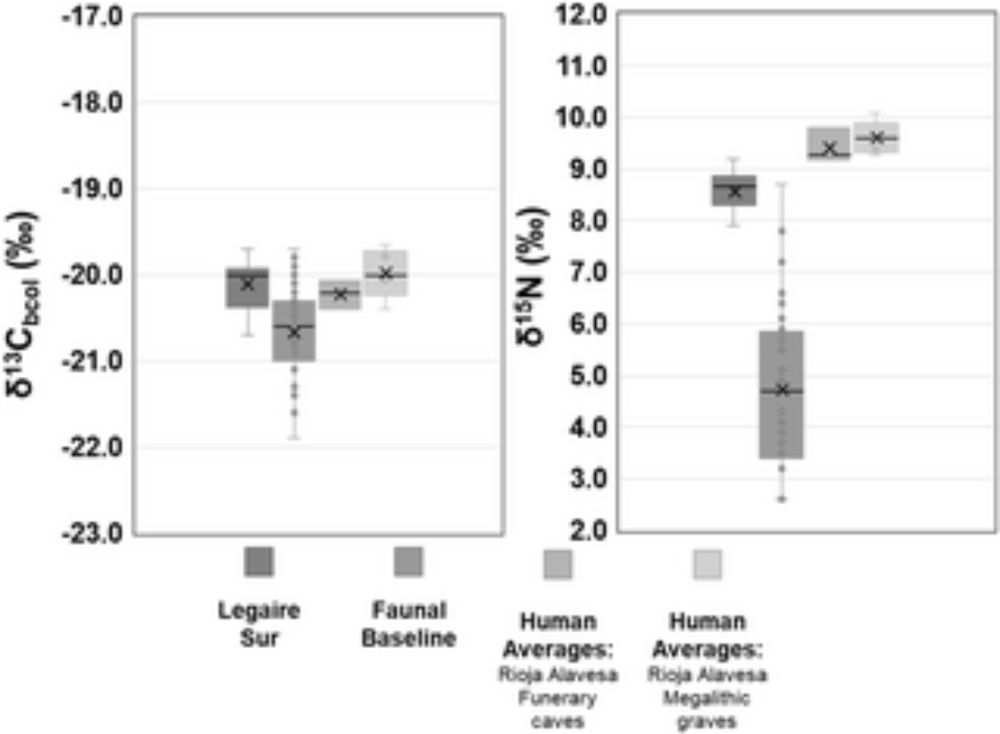Potentially hella useful for archaeology in the region. 🏺🧪 www.tandfonline.com/doi/full/10....
Potentially hella useful for archaeology in the region. 🏺🧪 www.tandfonline.com/doi/full/10....
Stable isotope data indicate origins of mislabelled historical bird specimens | onlinelibrary.wiley....
Rafael Dantas Lima, Ana Beatriz Navarro, Jason Newton, Alexander Charles Lees, Luís Fábio Silveira | #ornithology 🪶

Stable isotope data indicate origins of mislabelled historical bird specimens | onlinelibrary.wiley....
Rafael Dantas Lima, Ana Beatriz Navarro, Jason Newton, Alexander Charles Lees, Luís Fábio Silveira | #ornithology 🪶
New #CpgSthlm paper led by @maridehasque.bsky.social published in Biology Letters!
Genomic and morphological analysis reveals long-term mammoth hybridization in British Columbia, Canada
royalsocietypublishing.org/doi/10.1098/...

New #CpgSthlm paper led by @maridehasque.bsky.social published in Biology Letters!
Genomic and morphological analysis reveals long-term mammoth hybridization in British Columbia, Canada
royalsocietypublishing.org/doi/10.1098/...
⬇️⬇️⬇️
www.cell.com/cell/fulltex...
⬇️⬇️⬇️
www.cell.com/cell/fulltex...
Sulfur as a proxy for identifying coast-inland human mobility in Northern Iberia during Late Prehistory
#stableisotopes
journals.plos.org/plosone/arti...

Sulfur as a proxy for identifying coast-inland human mobility in Northern Iberia during Late Prehistory
#stableisotopes
journals.plos.org/plosone/arti...

"Emerging strontium isoscapes of Anatolia (Türkiye): new datasets and perspectives in bioavailable 87Sr/86Sr baseline studies"
www.frontiersin.org/journals/env...

"Emerging strontium isoscapes of Anatolia (Türkiye): new datasets and perspectives in bioavailable 87Sr/86Sr baseline studies"
www.frontiersin.org/journals/env...
www.sciencedirect.com/science/arti...

www.sciencedirect.com/science/arti...
buff.ly/KLlWZ3k
#OpenAccess #AminoAcids #Neolithic #StableIsotopeAnalyses

buff.ly/KLlWZ3k
#OpenAccess #AminoAcids #Neolithic #StableIsotopeAnalyses
onlinelibrary.wiley.com/share/AWBVEX...
onlinelibrary.wiley.com/share/AWBVEX...
journals.plos.org/plosone/arti...
@brusselsbioarch.bsky.social @amgc-vub.bsky.social

journals.plos.org/plosone/arti...
@brusselsbioarch.bsky.social @amgc-vub.bsky.social
In our newly published paper in Ecology Letters, we use serially sampled strontium and carbon isotopes from 18 species of antelope, buffalo, and zebra from the Last Glacial Period of Kenya to reconstruct herbivore behavior in the Late Pleistocene.
(1/6)

In our newly published paper in Ecology Letters, we use serially sampled strontium and carbon isotopes from 18 species of antelope, buffalo, and zebra from the Last Glacial Period of Kenya to reconstruct herbivore behavior in the Late Pleistocene.
(1/6)
journals.plos.org/plosone/arti...
journals.plos.org/plosone/arti...
Amanda Sengeløv & the team provide the first 604 plant samples from 220 locations, with more data coming soon!
Paper here👇
www.sciencedirect.com/science/arti...
Dataset available on @isoarch.bsky.social 👇https://doi.org/10.48530/ISOARCH.2024.001

Amanda Sengeløv & the team provide the first 604 plant samples from 220 locations, with more data coming soon!
Paper here👇
www.sciencedirect.com/science/arti...
Dataset available on @isoarch.bsky.social 👇https://doi.org/10.48530/ISOARCH.2024.001
New Article by #HEASVienna member #MagdalenaBlanz et al. on 'The effect of seaweed fertilisation on sulfur isotope ratios (δ³⁴S) and grain size in barley: Implications for agronomy and archaeological research'
www.heas.at/research/pub...
#HEASPublications

New Article by #HEASVienna member #MagdalenaBlanz et al. on 'The effect of seaweed fertilisation on sulfur isotope ratios (δ³⁴S) and grain size in barley: Implications for agronomy and archaeological research'
www.heas.at/research/pub...
#HEASPublications
www.bgs.ac.uk/datasets/bio...

www.bgs.ac.uk/datasets/bio...




